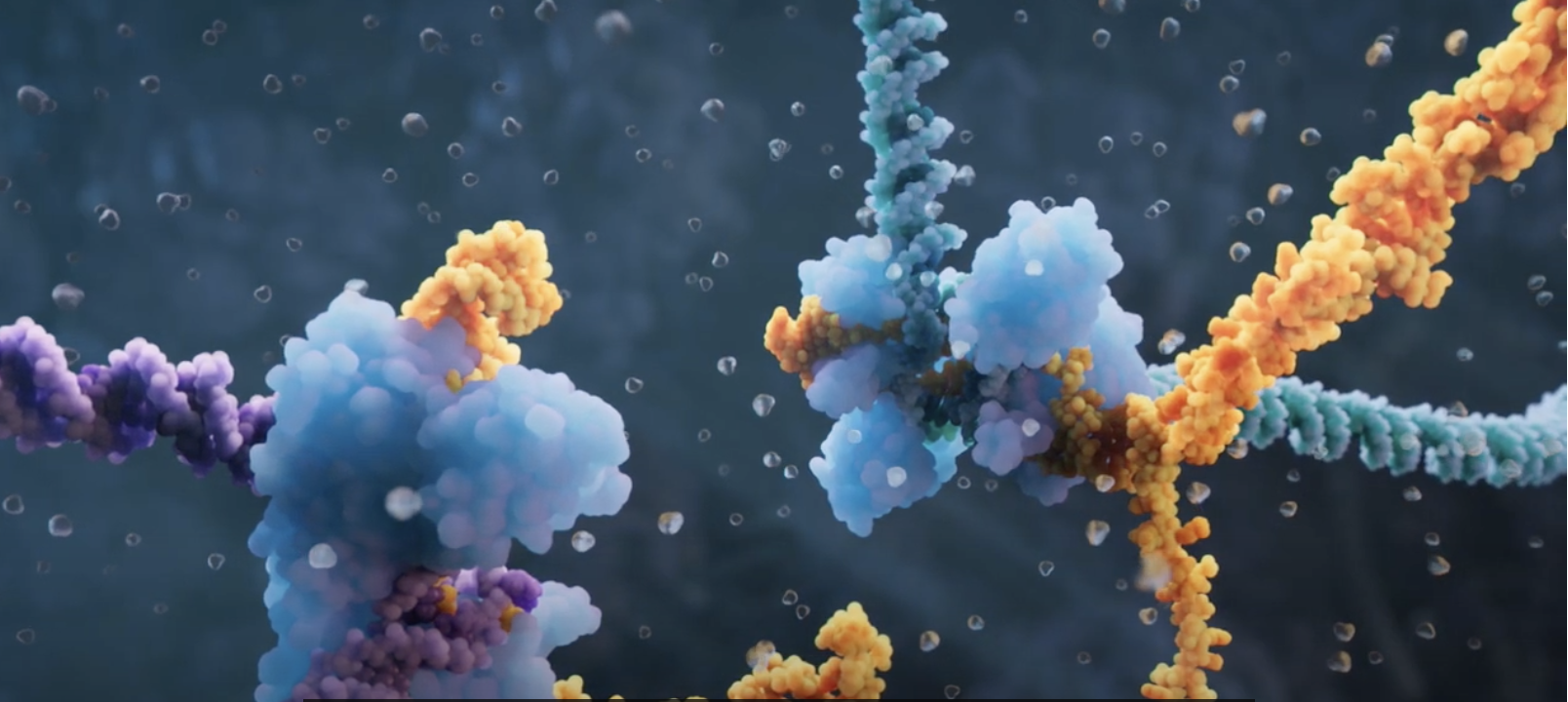Come Together: Bridge RNAs Close the Gap to Genome Design
By Jonathan D. Grinstein,
Genetic Engineering & Biotechnology News
| 06. 26. 2024
Partial screenshot from The Bridge Recombination Mechanism
video by The Arc Institute on YouTube (CC)
Buried in a family of mobile genetic elements, Arc Institute researchers led by Patrick Hsu, PhD, have discovered an RNA-guided system that enables modular and programmable DNA insertions, excisions, and inversions—another sizeable step for programmable genome engineering
“Everything in the last 14 years of genome editing has been based on CRISPR. We have been whipping this horse for a decade and a half, but we need more programmable functions with complexity beyond the molecular scissors that cut RNA and DNA.” So says Patrick Hsu, PhD, co-founder of the Arc Institute, in whose lab the next revolutionary phase of genome engineering may have just been unearthed, even as the CRISPR revolution has barely begun.
In January of this year, researchers in Hsu’s laboratory (he is also assistant professor of bioengineering and Deb Faculty Fellow at the University of California, Berkeley) posted a preprint on bioRxiv in which they claim to have discovered a new class of natural single-effector RNA-guided systems.1 That story, now peer...
Related Articles
By Anumita Kaur [cites CGS’ Katie Hasson], The Washington Post | 03.25.2025
Genetic information company 23andMe has said that it is headed to bankruptcy court, raising questions for what happens to the DNA shared by millions of people with the company via saliva test kits.
Sunday’s announcement clears the way for a new...
By Peter Wehling, Tino Plümecke, and Isabelle Bartram
| 03.26.2025
This article was originally published as “Soziogenomik und polygene Scores” in issue 272 (February 2025) of the German-language journal Gen-ethischer Informationsdienst (GID); translated by the authors.
In mid-November 2024, the British organization Hope not Hate published its investigative research ‘Inside the Eugenics Revival’. In addition to documentating an active international “race research” network, the investigation also brought to light the existence of a US start-up that offers eugenic embryo selection. Heliospect Genomics aims to enable wealthy couples to...
By Frank Landymore, Futurism | 03.18.2025
You can only throw so much money at a problem.
This, more or less, is the line being taken by AI researchers in a recent survey. Asked whether "scaling up" current AI approaches could lead to achieving artificial general...
By Craig S. Smith, Forbes | 03.08.2025
One recent evening in Shenzhen, a group of software engineers gathered in a dimly lit co-working space, furiously typing as they monitored the performance of a new AI system. The air was electric, thick with the hum of servers and...




